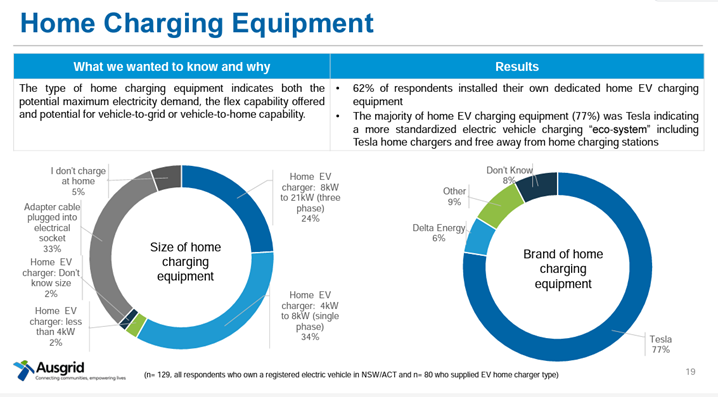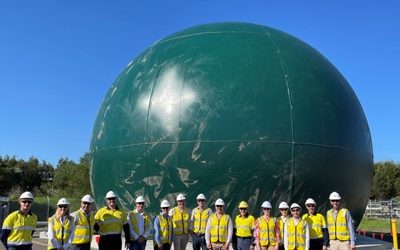Filling the EV “tank”
In the near future, the time you used to spend filling up your car at the petrol station will mostly be replaced by your electric vehicle quietly charging at home.
According to research by NSW network service provider Ausgrid, most charging (83 per cent) is undertaken in the home. This has huge implications for how the electricity network will look in a world where electric vehicle adoption and household electricity demand from other factors are driving usage up.


The worst outcome for everyone would be if we just kept building the electricity network to meet the infrequent, but ever-increasing peak demand. This would result in higher bills for everyone. There is a better way.
Data sharing will be key to the success of understanding how and when power is being used. If we continue to build out the electricity grid to cater for the relatively infrequent peak demand it is going to get very costly, very quickly, and the cost will ultimately be passed onto customers through their power bills. However by employing smart technology, like behind the meter batteries and storage and implementing data sharing procedures, networks will be able to receive data in a sensible way that protects customers’ privacy and keeps their bills as low as possible.
First there’s a bit of terminology we need to clarify before we dive into the answer.
At the household level, some EV owners will charge from a standard power outlet that supplies between 10 and 15 amps (known as level one chargers), but many will choose to install dedicated charging equipment which generally goes up to 32 amps (known as level two chargers). The difference is best explained by our friends at the Electric Vehicle Council.
While we expect most people to use level one charging, we fully expect level two charging to become a staple addition in homes over the coming years. Much like how appliances like dishwashers, dryers and laundry machines are commonplace now.
What’s important here is that the level two charging that goes into homes is smart. What we mean by this is that it has the capability in the future to receive external signals to charge in a way that doesn’t require costly network investment.
The second thing we should consider is a better arrangement that safely shares non-identifiable data between government and networks. What this might look like in practice is the state government vehicle department that records vehicles registration. They could batch this information by suburb and pass it onto the networks periodically. Even this high-level information is invaluable in enabling networks to make good investment decisions that saves money for all consumers.
This kind of public good data might very well be the difference between making or breaking the grid, especially in the context of the tough economic conditions many are facing today.
Luckily, the Energy Security Board is looking at this very topic and we’re hopeful that a sensible path forward emerges.
If you’re wondering, the future for the petrol station, our beloved ‘servo’, isn’t over, in fact quite the opposite. Much like today there will continue to be a huge demand for rest/travel stops and convenience locations where the EV “tank” needs to be refilled, kids plied with snacks and legs stretched.
Networks look forward to working with government, industry and consumers in enabling a clean electric vehicle future.

